Quote of the week
"By letting go of our egos and sharing our process, we allow for the possibility of people having an ongoing connection with us and our work, which helps us move more." — Show Your Work! by Austin Kleon.
Learning is a never-ending process.
In general, we feel like we need to pass through the learning process in silence, and we should only share our perfect, final product and ultimate success with the world.
However, this is the wrongest perception jeopardizing our learning process.
Let me give you an example:
In Turkey, while learning English at school, we do not want to speak among other Turkish people because we think making a mistake is humiliating. Unfortunately, the only way to speak English fluently is to speak English indeed!
In the end, we can not improve our speaking since we do not practice enough, and we can not practice since we think we are not good enough.
Do you see the vicious circle here?
In most cases, this is what society and the education system impose.
Yet, there is a movement in the online world evolving against this traditional mindset and changing the way of doing business in the past few years.
It is called "Build in public" approach.
What is "build in public"?
In the simplest version, "Build in Public" means;
sharing what you do to build or grow your business/personal brand with your audience
in the most transparent way possible to;
get feedback regularly,
and stay accountable.
Both makers and startups can apply it.
It allows taking the audience & community along for the ride.
It is not easy but full of potential.
As Dru Riley summarized;
It's storytelling. And stories are powerful.
What to share if you "build in public"?
Within the context of "build in public" approach, you can share and ask for comments on;
Objectives and performance metrics
Financials; revenue, revenue sources, spending
Unknown aspects and stories behind the products & ideas
Achievements, failures, and learnings along the way
Positive and negative feedback you receive
New ideas & products, and plans
Salaries of employees
The list can go on.
It is up to you what to share, its format, channels to use, and the frequency. You can
create a separate page on your website
post in your blog
share learnings via Twitter threads
ask questions via Twitter polls
engage with your community on LinkedIn
utilize platforms for makers & creators like Indie Hackers
write on relevant subreddits
record Reels & Tiktok videos showing behind-the-scenes, etc.
How to get it right?
Let me clarify something;
I think "build in public" approach should only be adopted if you "really" would like to do it.
I believe people can understand the difference between
a genuine attitude derived from curiosity and a fake marketing strategy.
Within this context, below three are vitally important to get "build in public" right:
A genuine learning motivation. The whole logic is to learn together.
Being transparent in what you share. No cheating. No shame.
Adapting a positive and constructive attitude towards comments coming from your audience.
Additionally;
It helps to create a system and be consistent.
You should decide what to share, where, and its frequency. Share your plan with your community.
In the beginning, you may need to connect with your followers individually.
Ask questions and feedback regularly.
You should choose the correct channels depending on the essence of your business.
You don't have to engage with your community on all channels.
I think it doesn't matter how many people are following your journey.
Having a small group of people from your core audience and being open to engaging with you is more valuable than thousands of followers.
It requires patience; no need to rush.
Building a high-quality and engaging community takes time and effort, but it is worth it.
The Benefits of "build in public"
First of all, it is a way of building an audience & community.
If you are unsure who your target audience is in the first place, you can get it from the comments. In other words, you will clarify your product market fit.
Gathering feedback & comments constantly should be fantastic.
You can understand what your community, users, and early adaptors need.
It allows you to make iterations before falling in love with your work and spending too much time, energy, and money.
I believe that you learn a lot from your audience, and it will drive widespread support.
You build solid relationships, not one-way communication only from you to your audience. Some of these relationships may bring valuable collaborations and new teammates, attract investors and even create friendships.
You may start to perceive your mistakes as untapped opportunity areas for further learning.
Sharing your plans with the public is like giving promises.
So, it creates accountability which is a good thing. It will help you to keep disciplined in what you do and maintain your motivation, especially if you are a solopreneur.
Your transparency will create trust and credibility.
Last but not least, accepting that you don't have to be perfect is lightning.
Potential Negatives of "build in public"
It can be challenging to face all comments in such an open way, and it can be anxiety-inducing.
If you manage an "open startup," too much sharing of company information may encourage copycats, give an advantage to your competitors, etc.
It requires additional time and effort.
You need to share the updates on your projects on time, review the comments and engage with your community.
✨ REAL-LIFE EXAMPLES: “BUILD IN PUBLIC” PROJECTS
Alex West - writing daily, monthly updates, and long essays on his way to building a solo business by covering all the aspects transparently. This is definitely one of the bravest examples of putting yourself out there.
Rob Hope - sharing behind-the-scene details from his side projects
Ryan Robinson - monthly income reports including everything from how to start a blog to his exact revenue sources from blogging including affiliates, online courses, consulting and other side projects. (not updated but great example)
Steph Smith - goals, performance, revenue, and progress (not updated but great example)
Marketing Examples - story and metrics on Indie Hackers (not updated but great example)
Open Startup - A collection of open startups sharing metrics transparently
such as Convertkit and Ghost.
📚 RESOURCES TO LEARN MORE
Buildinpublic - Newsletter & Podcast on build-in public
Indie Hackers - a community for people building Internet businesses and encouraging building in public. People share their product-building journey openly, ask questions, and feed each other.
r/buildinpublic - build-in-public subreddit
#buildinpublic on Twitter and buildinpublic website showing tweets with this hashtag.
WIP - a community of makers & indie hackers who help each other ship products.
Founder Marc Köhlbrugge also creates build in public.
Arvid Kahl - He empowers founders & creators who want to build calm & sustainable businesses in public. He is a must-follow when it comes to build-in-public.
→ Visit The Bootstrapped Founder website where you can find all his creations.
→ Too Many Eyes: Why Bootstrapped Companies Stop Being Transparent (Eventually) - Essay on how "build in public" approach should be approached by bootstrapped founders
Building in Public Definitive Guide by Kevon Cheung- Free guide
Build in Public Mastery by Kevon Cheung - Paid Course
→ You can also follow him on Twitter and check out his 2022 Year In Review as an example
Victor is a serial builder who moved from employee to solopreneurship a while ago and a big defender of build-in-public. Follow him on Twitter and subscribe to his newsletter where he also plans to share his progress on his projects.
BONUS: You can discover lots of makers who prefer build in public approach and their products under the below tweet shared by Victor.
We will zoom into build in public examples from newsletter creators in a more detailed way in the upcoming articles.
In the meantime enjoy exploring all of the above resources.
Other Sources of this article:




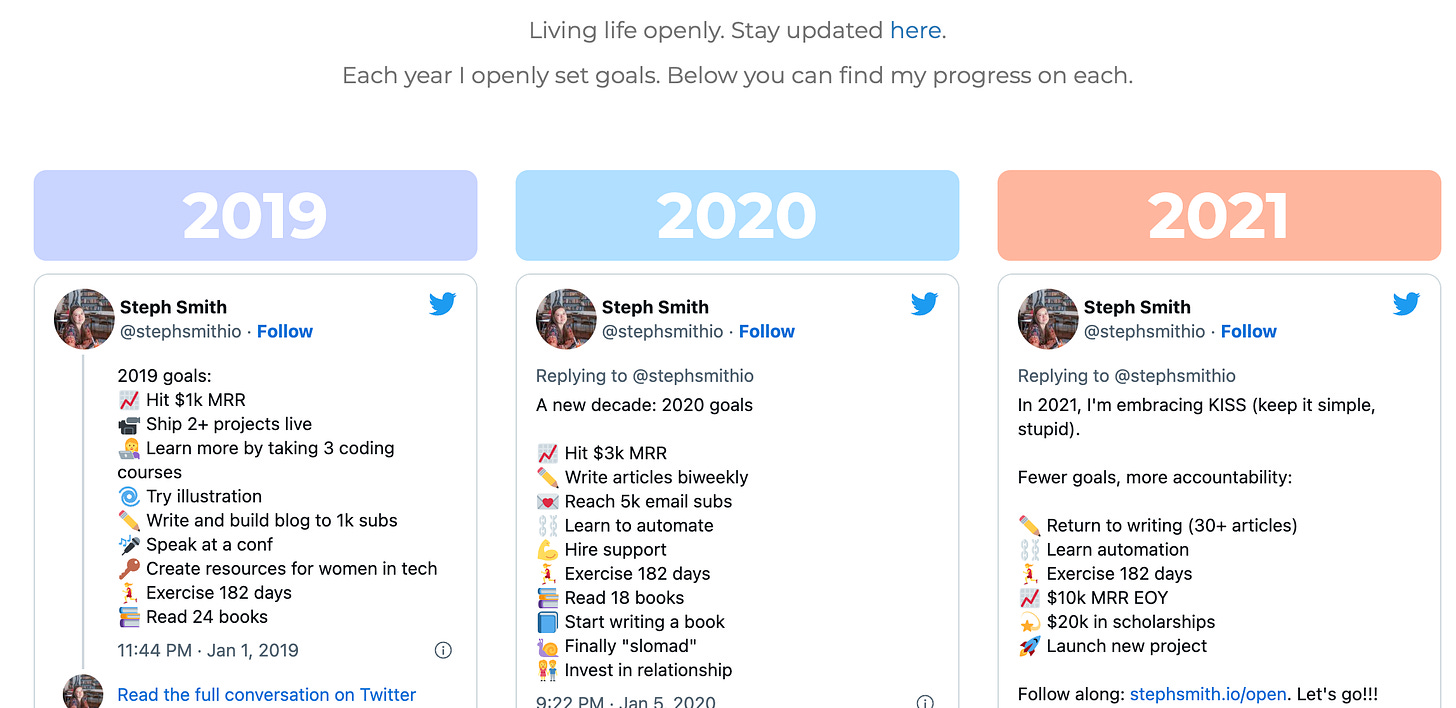
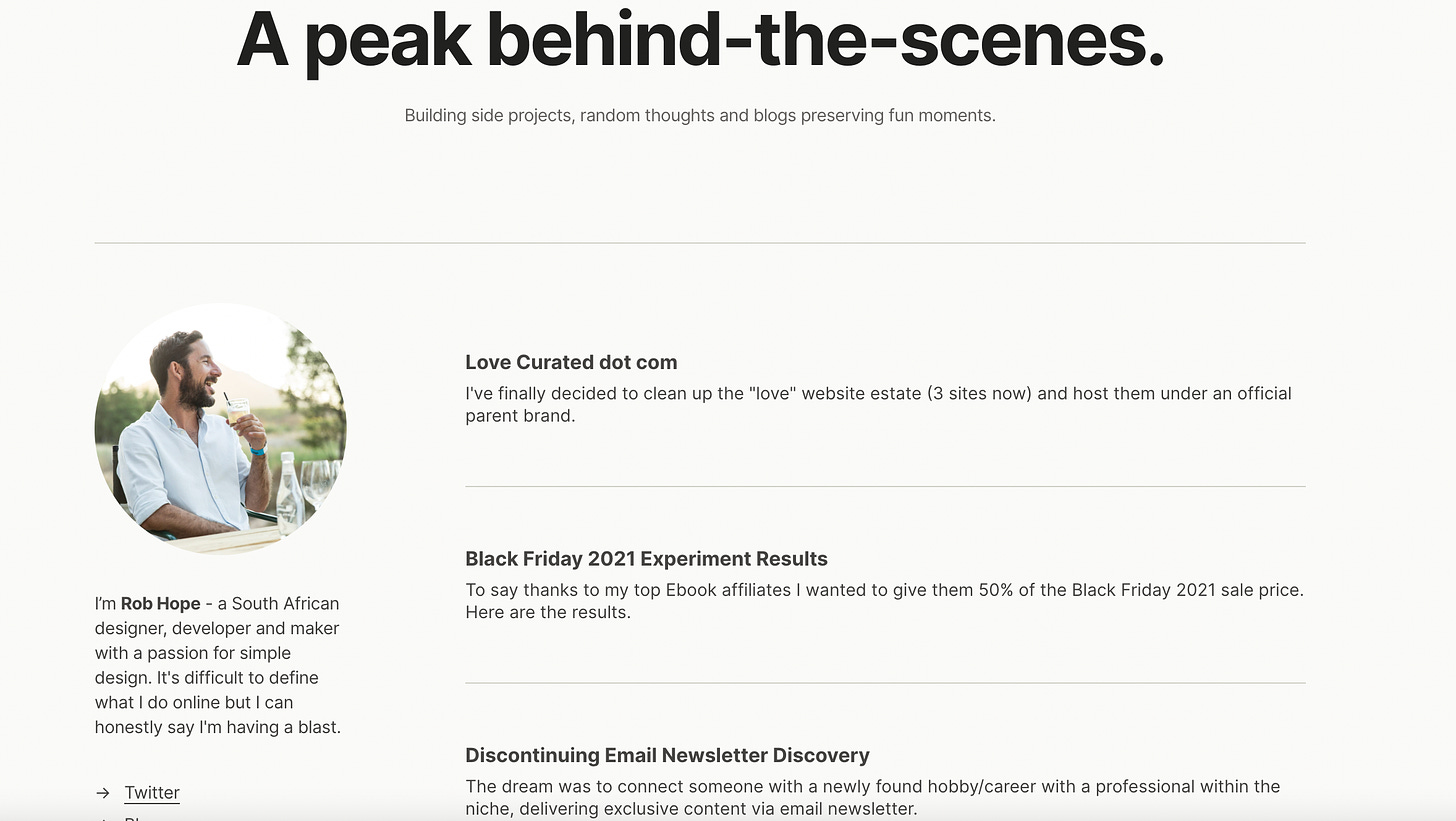
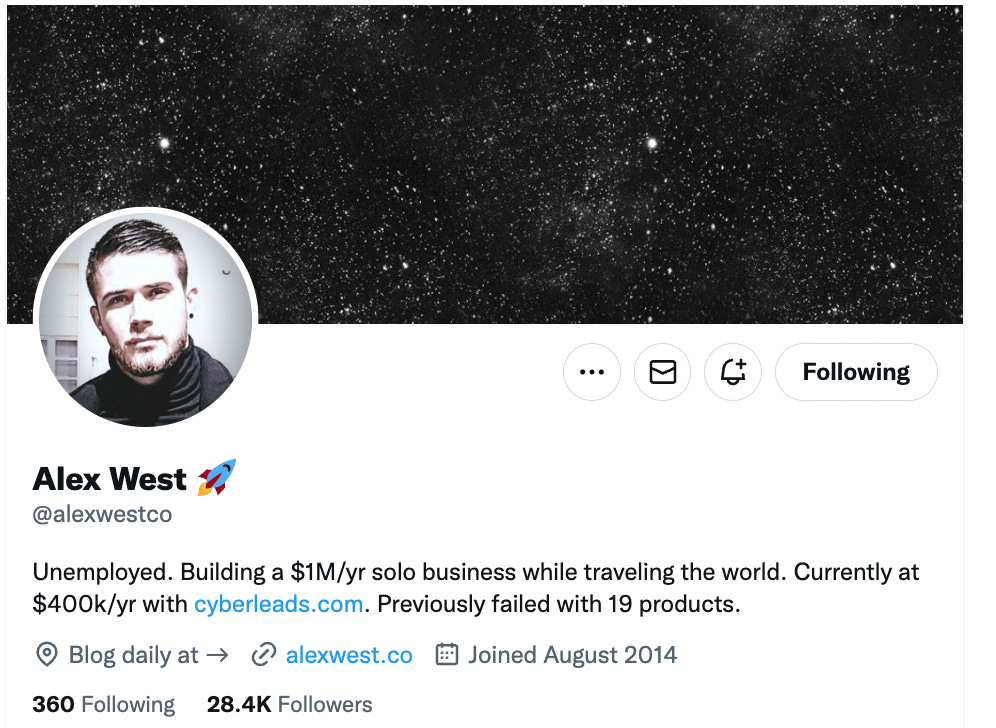
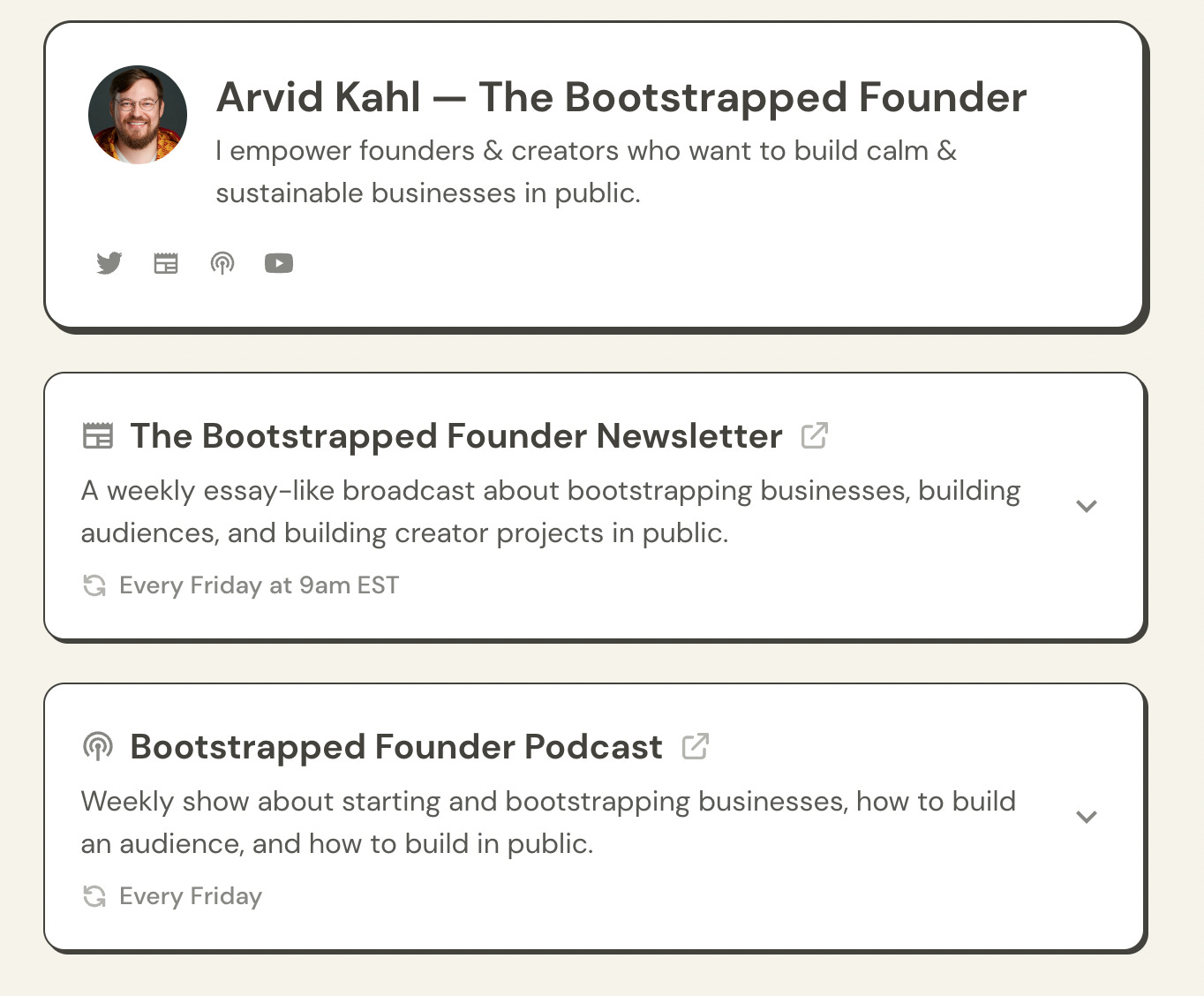
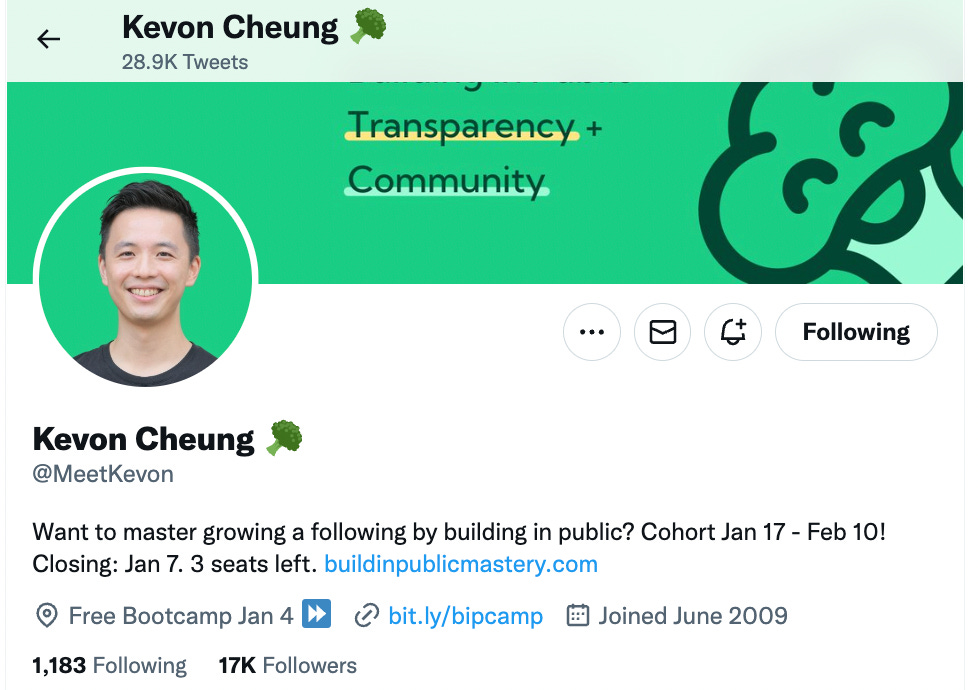
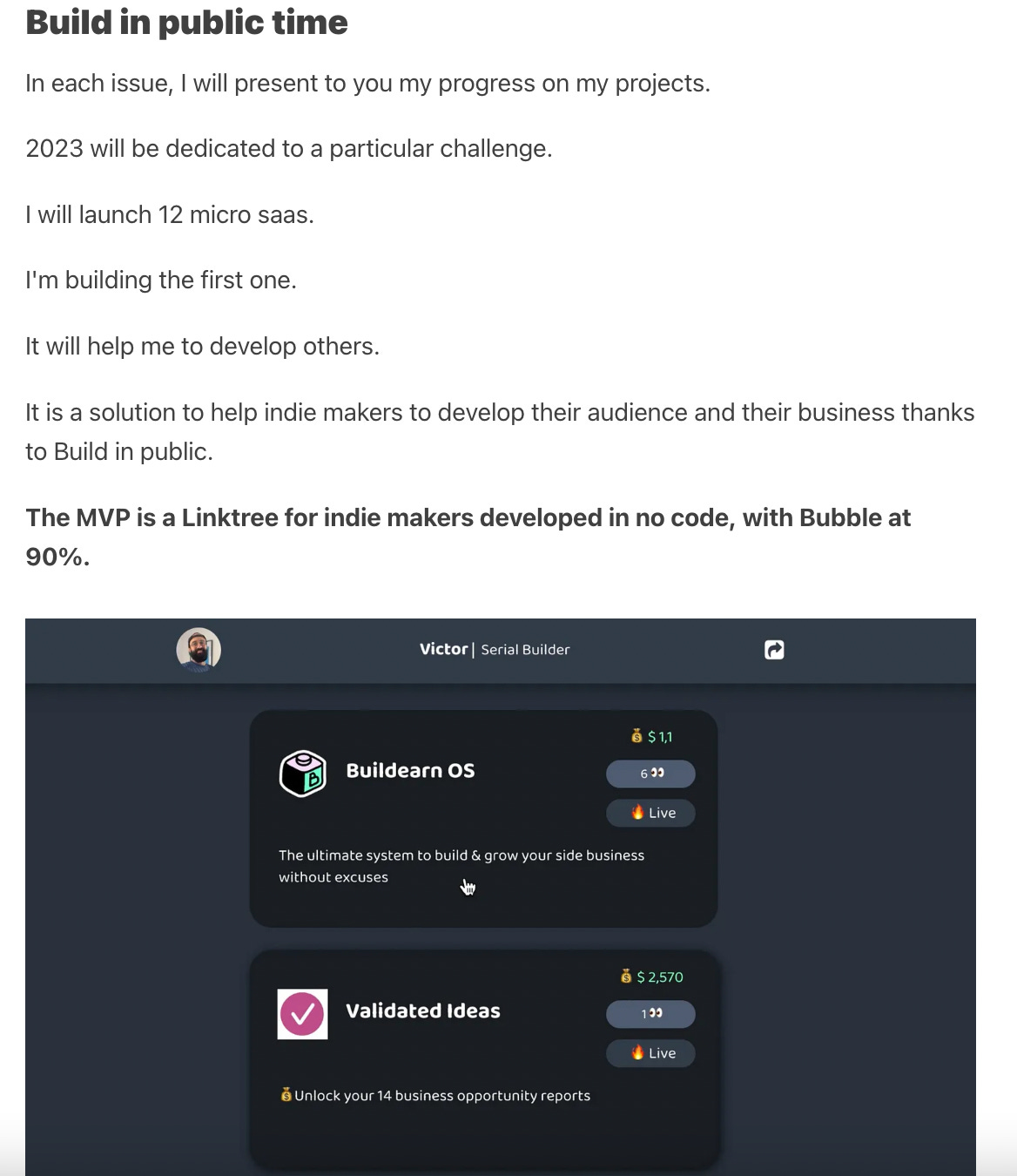
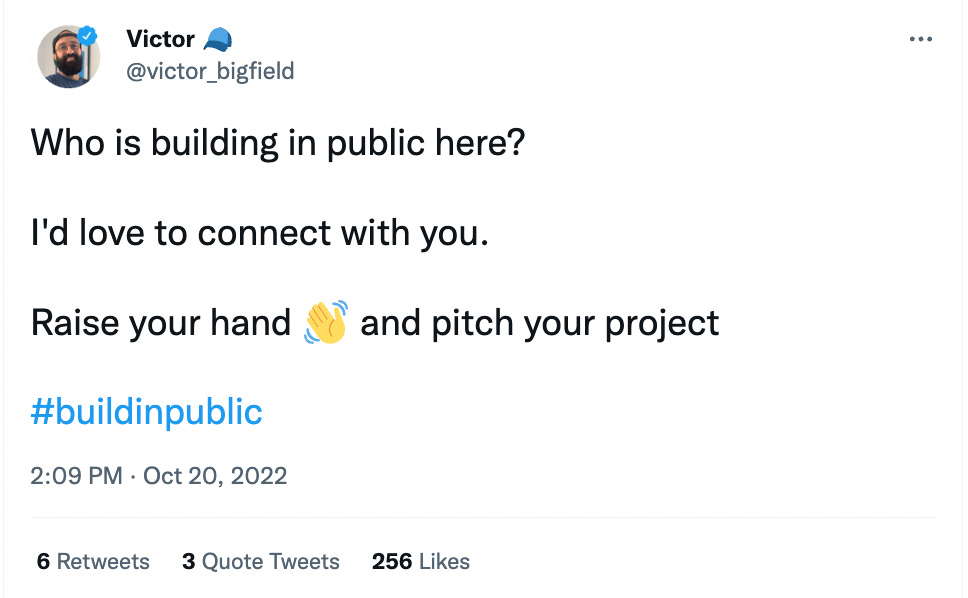
Perfect read! I started my own “build-in-public” based Instagram account just last week without knowing this concept existed. So, it was an educational read for me! Thanks a lot 🙏🏼
Very well crafted 👏.
This article includes some examples related to build in public as well.
https://thehustle.co/07312020-transparent-startups/
And I like the way how Buffer shared the pros and cons of build in public.
https://buffer.com/resources/transparency-movement/